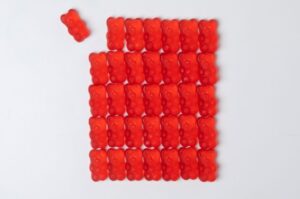
If you love popcorn, you are not alone. Popcorn is one of the most beloved snacks in the world, and for good reasons. It is crunchy, tasty, and easy to make. But if you have diabetes, you might have some questions about popcorn. Does popcorn raise blood sugar? Is it a healthy snack for people with diabetes, or a dangerous one?
Nutritional Value of Popcorn
If you wonder if popcorn is a good or bad snack for your diabetes. we need to look at the nutrition facts of popcorn. Popcorn is a whole grain food that provides many important nutrients, such as fiber, vitamins, minerals and antioxidants.
Fiber helps with digestion and lowers cholesterol levels, while antioxidants protect your cells from damage and may reduce the risk of some diseases. Popcorn is also low in calories, fat and sodium, making it a smart choice for people with diabetes.
Glycemic Index of Popcorn
The glycemic index (GI) tells you how fast a food raises your blood sugar levels after you eat it. Foods with a high GI make your blood sugar levels go up quickly, while foods with a low GI make them go up slowly.
Popcorn has a low GI of 55, which means it does not affect your blood sugar levels much. This is because the fiber and starch in popcorn take longer to digest and absorb, so they release glucose into your blood gradually. Low GI foods can help you avoid blood sugar highs and lows, which can improve your blood sugar management and lower your risk of problems.
Can People with Diabetes Eat Popcorn?
The answer is yes, popcorn can be a good choice for people with diabetes, as long as they are mindful of the amount and the toppings they use. Popcorn is a whole grain food that has a low glycemic index (GI), which means it does not raise blood sugar levels quickly or significantly. Popcorn also contains fiber, which can help slow down the digestion of carbohydrates and improve blood sugar control.
Does popcorn raise blood sugar?
The answer depends on how much popcorn you eat and how you prepare it. As mentioned earlier, popcorn has a low glycemic index (GI), but the glycemic index is not the only factor to consider. The glycemic load (GL) is a more accurate measure of how a food affects your blood sugar, because it takes into account the portion size and the amount of carbohydrates in the food.
According to the American Diabetes Association, one diabetic portion size of popcorn equals 3 cups of popped popcorn, or approximately 15 grams of carbohydrates. This amount of popcorn has a glycemic load of 6, which is considered low. A low glycemic load food is unlikely to cause a significant spike in your blood sugar.
However, if you eat more than 3 cups of popcorn, or add butter, sugar, salt or other toppings, the glycemic load will increase and so will your blood sugar. Therefore, it is important to stick to the recommended portion size and choose healthy ways to flavor your popcorn.
How much popcorn should you eat if you have diabetes?
Popcorn contains calories and carbohydrates that need to be accounted for in your meal plan. The recommended serving size for popcorn is about three cups of air-popped popcorn, which provides about 15 grams of carbohydrates and 90 calories. You should also avoid adding too much salt, butter, cheese, or other high-fat or high-sodium toppings that can increase the risk of heart disease and high blood pressure. Instead, you can try seasoning your popcorn with herbs, spices, nutritional yeast, or vinegar for extra flavor.
Tips for Managing and Monitoring Blood Sugar Levels
Here are some tips to help you eat popcorn in a way that supports your blood sugar management:
- Choose air-popped popcorn over microwave or pre-packaged ones, as they may have added fat, salt, or sugar that can increase your calorie intake and raise your blood sugar levels.
- Watch your portion size. A serving of popcorn is about three cups, which has about 15 grams of carbohydrates. Measure your popcorn before eating and include it in your daily carbohydrate budget.
- Spice up your popcorn with herbs, spices, or a bit of cheese, but avoid butter, oil, or sugar toppings that can add extra fat and calories.
- Pair your popcorn with some protein and healthy fat, such as nuts, seeds, or cheese. This can help slow down the absorption of carbohydrates and prevent blood sugar spikes.
- Keep moving and exercise regularly. Physical activity can help lower your blood sugar levels and improve your insulin sensitivity. Aim for at least 150 minutes of moderate-intensity exercise per week, such as brisk walking, cycling, or swimming.
- Check your blood sugar levels before and after eating popcorn. This can help you see how popcorn affects your blood sugar and adjust your portion size or insulin dose accordingly. You can use a device called a continuous glucose monitor (CGM) like Guardian to automatically measure your blood glucose level throughout the day and night. A CGM can help you spot trends and patterns in your blood glucose levels and alert you to highs and lows. Talk to your doctor or diabetes educator about whether a CGM is right for you and how to use it .
Conclusion:
Popcorn is not a bad choice for diabetes as long as you pay attention to the portion size, the toppings, and the timing of your consumption. It can provide you with some fiber, antioxidants, and whole grains that can benefit your health.
However, too much popcorn or popcorn with unhealthy additives can raise your blood sugar and harm your diabetes management. Therefore, it is important to enjoy popcorn in moderation and balance it with other nutritious foods.
Remember, everyone’s body reacts differently to different foods, so it is best to consult your doctor or dietitian for personalized guidance on how to include popcorn in your diabetes-friendly diet.







